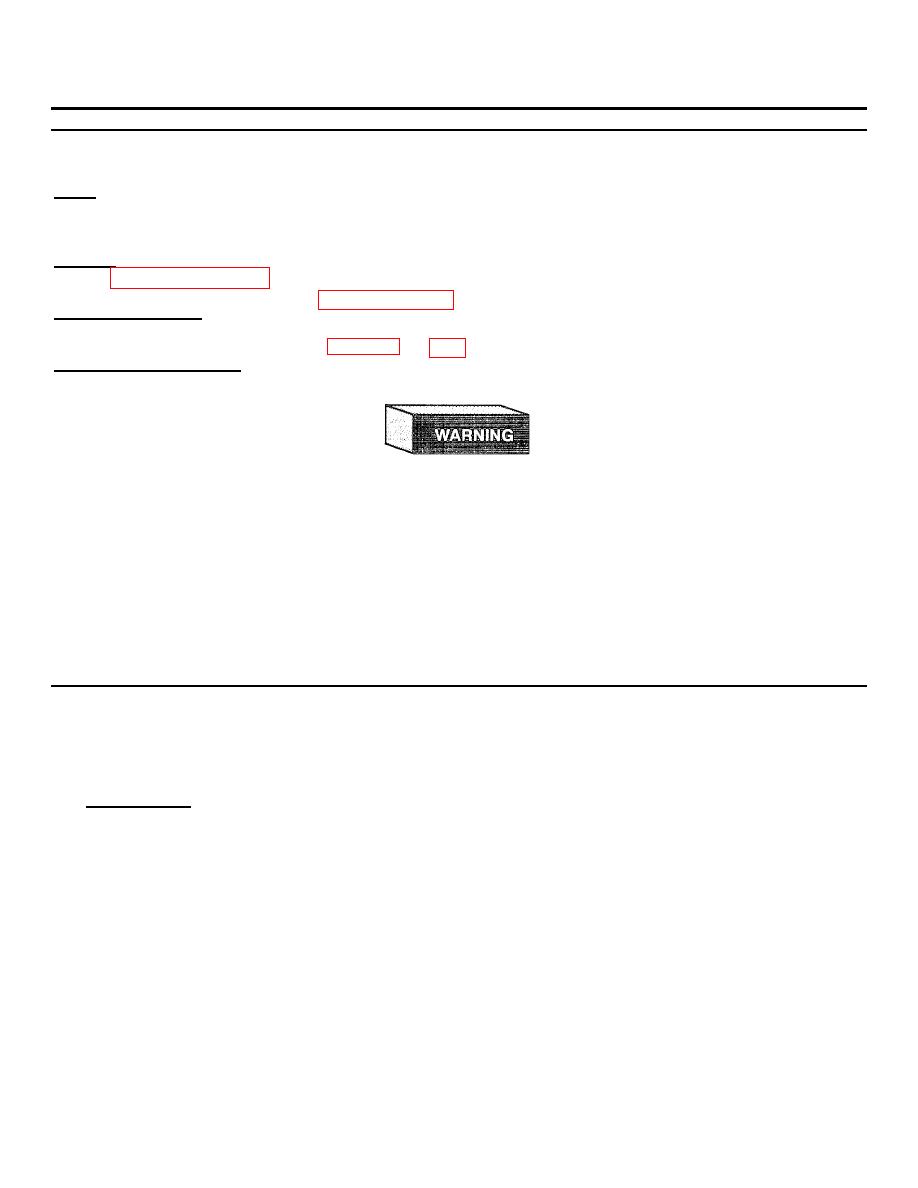
TM 9-4120-395-14&P
5-8. LEAK TESTING REFRIGERATION SYSTEM.
This task covers:
Service
INITIAL SETUP:
Tools:
Tool Kit, service, refrigeration unit
Rubber gloves
Safety goggles
Materials:
Rags (Appendix F, Item 7)
Monochlorodifluoromethane (R22) (Appendix F, Item 8)
Equipment Conditions:
Power off at power source.
General Safety Instructions:
HIGH VOLTAGE is used in the operation of this equipment. DEATH ON CONTACT or
severe injury may result if personnel fail to observe safety precautions. Do not operate
unit without panels and screens in place and tightly secured.
Death or serious Injury may result if personnel fail to observe safety precautions. Use
great care to avoid contact with liquid refrigerant or refrigerant gas being discharged
under pressure. Sudden and irreversible tissue damage can result from freezing. Wear
thermal protective gloves and a face protector or goggles in any situation where skin/eye
contact is possible. Prevent contact of refrigerant gas with flame or hot surfaces. Heat
causes the refrigerant to break down and form carbon chloride (phosgene), a highly
poisonous and corrosive gas.
NOTE
The entire repaired area should be thoroughly leak tested after repair or replacement of
any component before it is recharged with refrigerant-22. Leak testing is also the method
for troubleshooting when a system has lost all or part of its refrigerant charge through an
undetermined cause.
a.
Testing Method. There are two acceptable methods for leak testing the refrigeration system.
NOTE
The electronic gas leak detector is highly sensitive to the presence of a minute quantity
of gas in the air, and due to this factor is quite effective in the detection of small leaks.
However, due to the rapid dispersion oil refrigerant gas into the surrounding air, difficulty
may be encountered in pinpointing large leaks. The detector must be used in a well
ventilated but draft-free area.
5-11

